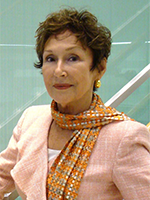Abstract
Washington State’s Department of Health was selected in 2020 to join a Trust for America’s Health expansion opportunity as part of its Age-Friendly Public Health Systems initiative that would include tribal public health departments, local health jurisdictions, and area agencies on aging. The goals were to address the social impact of COVID-19, demonstrate how important social engagement is to the mental health of older adults, and collect data that would help tribal programs identify gaps in services. Needs have now been identified, which will enable leaders to target interventions.
Key Words
Washington State Department of Health, Trust for America’s Health, Age-Friendly Public Health System, tribal health, social engagement, mental health
Washington State has a strong history in supporting older adults through its comprehensive long-term supports and services system. This system included a partnership between the Department of Social and Health Services’ Aging and Long-Term Support Administration and the Washington State Department of Health (DOH) to address falls prevention and chronic disease self-management for many years. With the development and release of the Washington State Plan to Address Alzheimer’s Disease and Other Dementias and the establishment of the Dementia Action Collaborative (DAC) in 2016, these efforts began to expand toward a broader focus on healthy aging and brain health. The DAC, implementing the plan, is a group of multi-sector public and private partners, and individuals with lived experience, committed to preparing Washington for the growth of the population living with dementia. The DAC’s first request to the legislature was to fund part-time staff positions at four state agencies to support implementation of the plan’s recommendations, including a position at DOH to focus on dementia.
In 2020, when Trust for America’s Health (TFAH) posted an expansion opportunity as part of its Age-Friendly Public Health Systems (AFPHS) initiative for two state departments of health, the DOH applied and was selected, along with the Mississippi State Department of Health.
In August 2020, when the DOH submitted its grant application to TFAH for the AFPHS opportunity, the goal was to include representatives from tribal public health departments, local health jurisdictions, and area agencies on aging that were participating in both leadership engagement through an AFPHS Advisory Committee and an action-oriented AFPHS Learning and Action Network. This was the first time TFAH had worked in the tribal health space and it became an opportunity to learn how healthy aging could be viewed from a tribal perspective.
Tribal Health Inequities
It was important to engage tribes in the Washington AFPHS project for many reasons. Central among these are the health inequities faced by American Indian/Alaska Native (AI/AN) older adults in the United States and in Washington. One stark inequity is the prevalence of dementia among this population. Medicare claims data shows dementia prevalence among those ages 65 to 74 in Washington is 45% higher for AI/AN individuals relative to non‐Hispanic whites (Dementia Action Collaborative, 2023).
In addition, non-Hispanic AI/AN individuals (15.9%) were twice as likely to be diagnosed with diabetes compared to non-Hispanic white adults (8.8%; Center for Health Statistics, n.d.). High blood pressure was 1.3 times as likely among non-Hispanic AI/AN adults (37.4%) compared to non-Hispanic white adults (32.2%; Center for Health Statistics, n.d.).
Native Americans are more likely to develop Alzheimer’s or other forms of dementia than white or Asian Americans, yet they have less access to healthcare and health services and are less likely to be diagnosed once they show symptoms (Alzheimer’s Association, n.d.).
Native American older persons have many of the same needs as other aging populations. But their life expectancy is shorter, making it vitally important to understand contributing factors. Historical trauma—the cumulative, multigenerational, collective experiences of emotional and psychological injury in tribal communities that has influenced Native Americans’ overall health and wellness—is considered a social determinant of health for this population. According to Henderson (2024), “AI/AN’s have the lowest income, highest poverty, least political power yet have survived by sheer determination.”
Who Are the Tribal Elders?
There are 574 federally recognized tribes in the United States. Each tribe is unique and determines its own membership. Being referred to as a tribal elder means being recognized by the community for one’s cultural and spiritual knowledge and often sought out for guidance and wisdom. Sometimes a tribal elder is defined as the oldest living person in a family system. At most tribal gatherings, when food is served, elders are acknowledged by being served first. There is an unspoken protocol that older persons are greeted with a handshake or hug at gatherings.
Native Americans’ life expectancy is shorter, making it of vital importance to understand contributing factors.
Each tribal community defines who is a tribal elder and sometimes the determination is made based upon program service and eligibility for those services. Achieving elder status and becoming a senior citizen are two very different classes. Social Security determines eligibility for Medicare at age 65, but among tribal communities, elder status is more significant than Medicare eligibility.
The TFAH Expansion
TFAH’s expansion opportunity came during the height of the COVID-19 pandemic, making it challenging to engage tribal and local public health, as well as area agencies on aging, as partners in this work, given how stretched these entities were in responding to the pandemic. The DOH continued to reach out, however, and one of its AFPHS Advisory Committee members, who worked for the Northwest Portland Area Indian Health Board, connected the DOH with article co-author Barbara Juarez, executive director of the Northwest Washington Indian Health Board (NWWIHB). The ensuing collaboration between AFPHS efforts, the Washington DOH, and three tribes that comprise this tribal consortium highlights the importance of cross-sector coordination.
The NWWIHB is a 501(C3) nonprofit corporation governed by a 12-member board of directors. Delegates to the board are appointed by the respective tribes receiving services, and its mission is to augment healthcare and public health services to Native people in the Pacific Northwest.
The NWWIHB comprises the following tribes: Lummi, Nooksack, Samish, Swinomish, Tulalip, and Upper Skagit. The total population for these communities is 17,000 members, and 2,383 of those individuals have been determined by the communities to be elders. The NWWIHB responded to DOH outreach and approved the executive director to apply for the mini-grant, which was awarded in May 2022. Initial steps to apply for and gain approval from the board of directors were seamless, if lengthy.
Early in the commitment to this project, but after NWWIHB directors agreed to participate, a leadership group was created with representation from each of the respective communities. This group identified two goals for the AFPHS work:
- Address the social impact of COVID-19 and how important social engagement is to the mental health of older adults; and
- Collect data that will help tribal programs identify gaps in services.
The negative impact of COVID-19 on the mental health and well-being of tribal elders due to isolation, loneliness, illness, and grief elevated this issue to the level of an imperative.
Both the AFPHS framework (the 6Cs—discussed in Gracia, Philips, & Wolfe in this issue) and the Age-Friendly Health Systems initiative framework (the 4Ms—discussed in Howell Nelson; Yeboah, Hudson, & Martin in this issue) provide strategies to enhance the health and well-being of older adults in tribal communities. The leadership group decided the most important component of the 6Cs would be to “connect and convene” tribal members to provide opportunities for social and cultural engagement to share stories and traditions. For the 4Ms framework it was to determine “what matters” to the tribal elders.
Via the AFPHS project, the DOH was able to create older adult health profiles for all Washington counties. These profiles provided some base information useful in determining the data to be collected on tribal elders.
‘The survey goal was to identify and understand how health determinants impact tribal elders.’
For context, AI/AN individuals born today have a life expectancy that is 5.5 years less than among the total U.S. population (73.0 years to 78.5 years, respectively; Indian Health Service, 2019). AI/AN populations continue to show higher mortality rates than others (often due to chronic liver disease, diabetes, and unintentional injuries). The older adult profiles for Skagit, Snohomish, and Whatcom counties showed that older adults accounted for 40% of emergency room visits, approximately 40% of which were potentially avoidable. Mobility is also a challenge for 40% of AI/AN people ages 65 and older (Altarum, 2021, 2021b, 2021c).
Elevating Healthy Aging as a Core Public Health Function
The NWWIHB project goal was to enhance public efforts to improve the health and well-being of older adults in tribal communities by elevating healthy aging as a core public health function, with a foundational focus on equity. A work plan aimed at addressing this goal was developed and approved using TFAH’s 6Cs framework. A draft survey to collect data was presented, reviewed, and revised by a work group made up of co-author Barbara Juarez, tribal staff working with their older adult population, and a representative of the local area agency on aging. The project was submitted for approval by the Northwest Indian College Institutional Review Board in March 2023. The questionnaire was revised to ensure there were no potentially identifiable questions and the project was approved on April 17, 2023.
Next steps included following the tribal protocol for seeking approval to conduct surveys in each of the tribal communities; approval was subsequently received from three of them. Surveys were conducted during tribal functions, which were sponsored by their elders’ programs and only those ages 55 and older were asked to respond. The survey goal was to identify and understand how health determinants impact tribal elders. Thirty-four questions sought information on demographics, self-determination of health status, needs of daily living, mental health, finances, technology, culture, nutrition, transportation, and environmental health. A total of 253 surveys have been collected. At the time of this writing, the data is still being analyzed, and results will be reported to each tribal community to be used to identify needs and plan additional support for tribal elders.
Conclusion
Specific survey data is not yet available to the public, but some of the needs identified have been illuminating. For example, in one tribal survey, all respondents noted they could use help inside their homes with activities of daily living. Many have experienced falls and most reported needing some type of home maintenance or modification to reduce the risk of falls, and to make necessary repairs. This information will enable NWWIHB leaders to better target resources and interventions to support tribal elders, and have provided the DOH with opportunities for ongoing engagement and support, including sharing resources and access to programs and services.
Marci Getz, MPH, is director, Health Aging Initiatives, Washington State Department of Health. Barbara Juarez is executive director at the Northwest Washington Indian Health Board in Bellingham.
Photo caption: Whatcom Falls, Bellingham, WA.
Photo credit: Shutterstock/Edmund Lowe Photography
References
Altarum. (2021a). Older adult health county profile: Skagit County. https://asaging.org/sites/default/files/2025-03/agefriendly_wa_Skagit_County.pdf
Altarum. (2021b). Older adult health county profile: Snohomish County. https://asaging.org/sites/default/files/2025-03/agefriendly_wa_Snohomish_County.pdf
Altarum. (2021c). Older adult health county profile: Whatcom County. https://asaging.org/sites/default/files/2025-03/agefriendly_wa_Whatcom_County.pdf
Alzheimer’s Association. (n.d.) Native Americans and Alzheimer’s. https://www.alz.org/help-support/resources/native-americans
Center for Health Statistics. (n.d.). Behavioral risk factor surveillance system. Washington State Department of Health. https://doh.wa.gov/data-and-statistical-reports/data-systems/behavioral-risk-factor-surveillance-system-brfss
Dementia Action Collaborative. (2023). Washington State plan to address Alzheimer’s disease and other dementias 2023–2028. Washington State Department of Social and Health Services. https://www.dshs.wa.gov/sites/default/files/ALTSA/stakeholders/documents/AD/Washington State Plan to Address Alzheimer%E2%80%99s Disease and Other Dementias 2023-28.pdf
Henderson, N. (2024, August 22). Social determinants of health in dementia: The Indigenous way [Presentation]. Northwest Tribal Brain Health and Dementia Summit, Portland, Oregon.
Indian Health Service. (2019). Disparities. https://www.ihs.gov/newsroom/factsheets/disparities/









